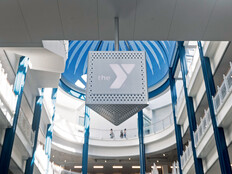Managing Hard Drives in Vista
Whether you choose Vista, an older version of Windows or some flavor of Linux as your operating system, the hardware components remain largely the same. Each operating system requires some type of processor, RAM, peripherals and power. But the hard drive is a standard component that does change, and understanding how to properly manage hard drives can greatly enhance the performance and security of your system.
There are some unique aspects to managing hard drives on Microsoft’s latest Vista operating system, which will change the way drives are partitioned, use of multiple drives and managing partitions.
Types of Partitions in Vista
Not all hard-drive partitions are created equal. Certain partitions fill specific roles or perform unique tasks required by Vista. The three primary partition types in Vista are system, boot and active. Of course, if you have only one partition, it may fill all of the roles and perform all of the tasks. But with the massive hard drives available today, most drives will contain at least a couple of different partitions to make managing the drives and data less cumbersome, so understanding the partition types may be helpful in configuring your hard drive. Below is a brief description of each partition type.
System
The system partition contains the files Vista needs to start up. The partition can be formatted using FAT, FAT32 or NTFS. For performance and security reasons, NTFS is recommended — unless you are configuring your system to dual boot an older Windows operating system, such as Windows 98. If that’s the case, the system partition must be FAT or FAT32 to accommodate that configuration.
The system partition is used to boot the operating system, and it needs to house only a few key files and does not need to be large.
Boot
The naming confusion continues with the boot partition. While the system partition is used to boot the operating system, the boot partition contains the operating system. The boot partition is where Vista is actually installed. All of the files that make up the operating system are stored here, and many other drivers and files are added to this drive as you install other programs and applications within Vista.
You cannot run two versions of Windows from the same boot partition. Each operating system needs a separate boot partition to contain the operating system files. Because the Windows Vista operating system uses a fair amount of hard-drive space to begin with and the boot partition should have room to grow, this drive needs to be significantly larger than the system partition and should probably not be less than 2 gigabytes.
Active
The active partition is another way of referring to the current boot partition. If you have a system running multiple operating systems, only one of the boot partitions can be active at a time. The active partition must also be on disk 0, which is the first hard drive attached to the computer. If you have more than one physical drive, sufficient space must be reserved on your first hard drive to contain the various operating systems you want to run. The second drive can be used for installing applications and storing data.
Using Multiple Partitions
There are times when you should partition a physical hard drive into multiple smaller drives. Partitioning can be used to create a separate sandbox or scratch area that you can reformat without wiping out the rest of your data. It can also be used to separate data, such as documents, spreadsheets or MP3s, from the operating system or application files.
In the event that you want to run more than one operating system, you will need to have more than one partition because each operating system will need its own boot partition. The Windows Vista boot manager dynamically assigns the active partition to the boot partition of the operating system that you choose at startup.
You can reduce redundancy and conserve disk space in a multiboot system by creating a designated partition for applications and a designated partition for data. That way, no matter which operating system partition you boot up, you can have the applications installed in the same place and have access to your data files without having to create copies for each operating system. When formatting these partitions, keep in mind the limitations of the operating systems you are using. If you need to access the data from Windows 98, for example, you cannot use NTFS on your data drive. You need to format it with FAT or FAT32 so that the older version of Windows will be able to read the information.
Designating a specific partition for holding data files can also make backing up your data more efficient. A periodic backup of your entire system is wise, but your operating system and applications can be reinstalled from the original CDs or installation files. The data you create, however, changes much more frequently and is irreplaceable. With the data on a drive of its own, backing up can be streamlined by simply specifying that the entire data partition be backed up.
Creating and Managing Partitions
In Windows Vista, the primary method for managing disk drives and partitions is with the disk management utility. Right-click on My Computer and select Manage. When the Computer Management console opens, expand Storage in the left pane and select Disk Management.
The right pane will display information about the drives, both internal and removable, attached to the computer. The top of the display will list the drives and basic information regarding their size, how they are formatted, and whether they are active, boot or system partitions, among other things. The bottom half of the display shows much of the same information represented more graphically.
By right-clicking on a drive or partition, you can view the available tasks you can use to manage it. These include format, extend volume, shrink volume, delete volume, mark partition as active, and change drive letter and paths. Some tasks may not be available for some drives, and those options will be grayed.
If there is available unallocated space on a drive, you can also select that unallocated space to create a drive or partition. Windows Vista also includes the ability to change disks from basic to dynamic and to span multiple drives to create one drive or partition. In other words, if you have a 160GB drive and a 320GB drive, you can make them dynamic and span the physical drives to create one 480GB drive. Vista will display and treat the two drives as one. This can be helpful if you need to expand your drive capacity beyond the limits of your existing physical drive, but you do not want to actually reinstall or migrate all of the existing data.
While Windows Vista does provide tools to let you alter and modify disk partitions, doing so usually destroys the existing data. If you are using the Windows Vista tools to manage disk drives and partitions, make sure you completely back up your data before executing your changes. An alternative is to use a third-party tool such as PartitionMagic from Symantec to work virtually on any drive.
Windows Vista provides the tools necessary to create and manage hard-drive partitions. Yet keep the following in mind:








